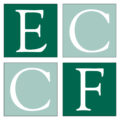Leading creatively instead of reactively
 Last week, I had the pleasure of speaking to a group of CFOs and other financial executives about leadership competencies that allow us to work in a creative, generative mode.
Last week, I had the pleasure of speaking to a group of CFOs and other financial executives about leadership competencies that allow us to work in a creative, generative mode.
Using a simplified adaptation of a model that I use frequently to work with clients (developed by Bob Anderson of the Leadership Circle), I also explained the natural reactive tendencies that we all have to approach things from our comfort – or safety – zone. Someone’s comfort zone may be perfectionism, domination, or “go along to get along,” but it’s that safe and habitual place that we retreat to when the pressure is on.
Reactive Tendencies. Maybe you find yourself resorting to “my way or the highway” behavior when an important job really has to get done. After all, you reason, that’s what you get paid for; to get the job done RIGHT. Or maybe when there is a topic that really needs to be brought to the table, you stay quiet, assuming that it is better to keep the peace.
These are both comfort zone reactive tendencies driven by our beliefs about what it takes to stay safe. Whatever your comfort zone is, such safety positions seldom promote our best leadership work. In a way, such operational modes are anything but safe because they keep us mired in reactive ways of being, which fail to move our organizations forward or give us satisfaction.
Creative Competencies. Last week I spoke to the group of financial executives about another way of being; a way of being that is based instead on beliefs in the power of collective wisdom, the value of people, and unconditional self-acceptance. We talked about leaders developing creative competencies based on thinking systemically, focusing strategically, and leading with purpose.
As we talked, I saw real engagement in the room. A lot of heads were nodding as people envisioned the joy of leading creatively rather than reactively.
Focus on one’s own self first. Then, as inevitably happens when I talk to leaders about building their own capacity to lead, the questions gradually shifted to “the other.” Someone pointed out that it must be a lot easier to lead creatively in an organization where creative leadership is the expected norm. More than one person wanted to know how to assess the creative competency of an organization one was contemplating joining.
I answered their questions as best I could and then brought things back home. The place to begin practicing creative competencies is with one’s own self. In my experience, most people believe that they work in organizations or with people that are dysfunctional to some degree. Building our own creative competencies will help us deal with whatever we are facing, while reactive tendencies will almost always produce more of the same.


